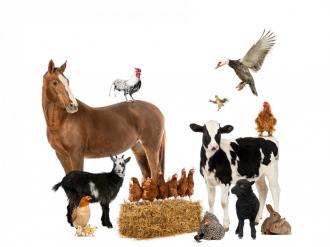News Taffy
| Post Your News Send Us An Event Start A Gallery |  |
| Most Recent | Most Popular | Top Contributors | Galleries | Events |
 | Contributor: admin subscribe to my stories |
 The Cardiologist's Wife - Antibiotics in Our Food Are you concerned about antibiotics in the food you serve your family? The topic is worth exploring in regards to your wellbeing. Since penicillin was discovered in 1928, antibiotics have revolutionized medicine by saving thousands of lives and curing people of some pretty nasty infections. However, the ease of use and effectiveness of antibiotics have led to their overuse, resulting in antibiotic resistance around the world. Some scientists believe this poses a serious threat to our longterm health. Interestingly, over 80% of the antibiotics sold in the U.S. are used in meat and poultry production according to scientists at Johns Hopkins. Antibiotics are used on healthy animals to promote growth or to prevent disease in crowded or unsanitary conditions. The meat and poultry producers say there is no harm in using antibiotics this way but some scientists disagree. Scientific evidence from many different sources has concluded there is a real threat to public health from the overuse of antibiotics in food animals. Many organizations such as the World Health Organization, the CDC and the American Medical Association are in agreement on this issue and are pushing for significant reductions in the use of antibiotics in food animals. Whenever we use antibiotics, there is a risk that some of the bacteria will survive and become drug resistant. These drug resistant bacteria, or superbugs, can multiply and spread, leaving human beings vulnerable to infections which can’t be cured, possibly leading to an increasing number of deaths. In the 1950’s, scientists discovered that adding low doses of antibiotics (low enough to be ineffective in treating actual infections) to animal feed increased the growth rate of livestock tremendously. This practice, called sub-therapeutic antibiotic use, cuts the time from birth to market, resulting in greater profits for producers. Scientists aren’t certain exactly how antibiotics increase the growth rate but possibly it affects the metabolic system and the gut flora. Now some scientists are wondering if there is a connection between the rapid growth of the animals we eat and the obesity epidemic human beings are experiencing as widespread use of antibiotics in food animals coincided with the obesity epidemic. Our intestinal tract is filled with good bacteria which helps us digest food, gets rid of toxins and carcinogens, maintains our immune system and regulates cholesterol and hormone levels, among other things. This bacteria is extremely important to our health but can be killed off by taking antibiotics. When this happens, harmful bacteria can flourish. Some scientists think that the harmful bacteria can cause us to crave sugar and other less nutritional foods, setting us up for obesity and other health related problems. It is easy to see how antibiotics from any source such as the meat we eat could have this negative effect. The FDA does regulate which antibiotics can be used and for what purposes, but critics say the regulations don’t go far enough. The FDA has promoted voluntarily phasing out the use of antibiotics but so far profit margins are more important to most producers. What options do you have when feeding your family? As a consumer, you can shop for meat which is labeled as raised without antibiotics (with the USDA Certified Organic Seal) and eat at restaurants which have pledged not to use meat or seafood raised with antibiotics like Chipotle and Panera Bread. Pork tends to have the most antibiotics, followed by chicken, then beef; antibiotics are used in the production of farmed fish and seafood. You can also include more fruits and vegetables in your diet. [+] add comment |














